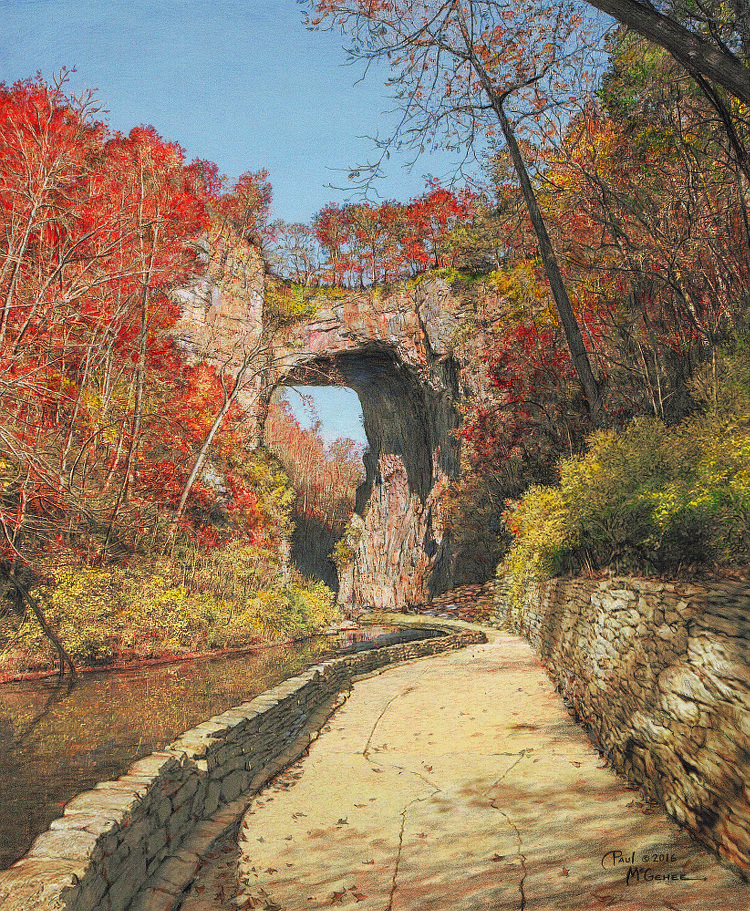|
"Natural
Bridge" by Paul McGehee. Easily one of the most dramatic and strikingly
beautiful scenes in America, Virginia's Natural Bridge is also rich in
history. Located in Rockbridge County, the natural arch cut through
limestone over the centuries by Cedar Creek was a sacred site to the
Monacan Indians. Years later in 1750, a young George Washington
surveyed the area, and carved his initials "G.W." into the stone wall
of the bridge...it is still visible today. In 1774, the future
principal author of the Declaration of Independence had purchased 157
acres of land from King George III for the whopping sum of 20
shillings. The land deal included the Natural Bridge. He built a log
cabin retreat there, and referred to the rock formation in his writings
as "the most sublime of nature's works". Jefferson himself surveyed the
area in 1802, during the time he was our third President. Over the
years Jefferson hosted many famous guests at his Natural Bridge
retreat, including future Presidents James Monroe and Martin Van Buren.
Throughout the 19th century, Natural Bridge was one of the major
tourist
attractions of the new world. Writer Herman Melville even referenced it
in "Moby Dick" in a passage describing the giant whale reading, "but
soon the fore part of him slowly rose from the water; for an instant
his whole marbleized body formed a high arch, like Virginia's Natural
Bridge". More recently, the site was electrically lit going back to
1927 for dramatic evening views, attracting still more tourism.
Currently it is a park where presentations of the Biblical story of
Genesis are dramatized. The deed to Natural Bridge was transferred to
the Commonwealth of Virginia in 2014, and there are plans for the area
to soon become a state park. "Natural Bridge" is faithfully reproduced
from
McGehee's beautiful color pencil original as a hand-signed limited
edition of only 500 archival quality prints.
|


